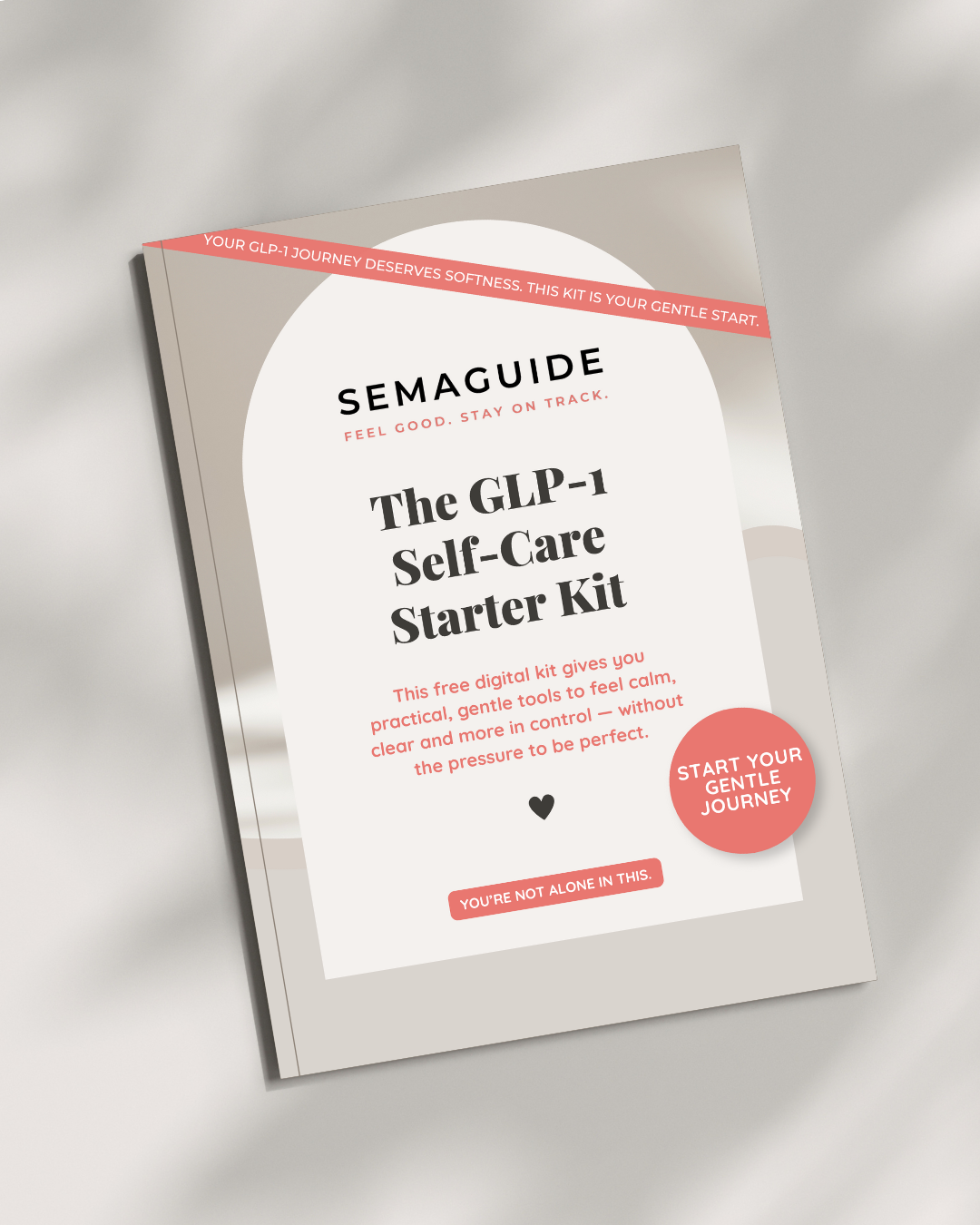Starting Ozempic? You’re not alone. And if you’re already feeling a little off — like nauseous, tired, or bloated — you’re really not alone. So many women feel the same, especially in those first few weeks. Let’s walk through what’s normal, what’s not, and how to feel a little more like yourself again.
Table of Contents
The Most Common Ozempic Side Effects
Here’s the honest truth: most women feel at least one of these in the beginning:
- Nausea — easily the most common. Usually mild and fades.
- Fatigue — your body is adjusting, and it’s totally OK to rest more.
- Burping or bloating — weird, but so normal.
- Constipation — digestion slows down a bit at first.
- Low appetite — expected, but still: please eat enough.
💡 Most of these side effects start in the first 2–4 weeks and tend to ease up after that.
Less Common (But Still Happens!)
Everyone’s body is different. Some women notice:Everyone’s body is different. Some women notice:
- Heartburn or reflux
- Headaches or dizziness
- Hair thinning (usually after a few months)
- Mood changes — feeling down, anxious, or just off
🌱 Little tip: Keeping a notes app or journal helps track how you feel — and makes doctor chats way easier.
When You Should Call Your Doctor
Some symptoms aren’t “just part of it.” Call your doctor if you notice:
- Severe stomach pain that won’t go away
- Ongoing vomiting (like all-day nausea or throwing up for more than a day)
- Yellow skin or eyes (possible liver/gallbladder issues)
- Racing or irregular heartbeat
- Extreme tiredness or confusion
🚨 You know your body. If something feels wrong, trust that instinct.
Why These Side Effects Even Happen
Ozempic is a GLP-1 receptor agonist — a medication that slows down how quickly food leaves your stomach, makes you feel full longer, and helps with blood sugar control.
That all sounds great, but your body needs time to adjust — especially your digestion. That’s where nausea, bloating, and bathroom weirdness come in.
How to Ease the Most Common Side Effects
Here’s what helps (from women who’ve been through it):
Nausea:
- Stick to light foods (toast, banana, rice)
- Sip peppermint or ginger tea
- Avoid fried or greasy meals (for now)
Fatigue:
- Drink water — more than you think
- Rest when you need it (guilt-free!)
- Even a short walk can give you a boost
Constipation:
- Stay hydrated (add lemon or cucumber for flavor)
- Eat fiber (chia, oats, berries, veggies)
- Ask your doctor about magnesium or stool softeners
Should You Stop Taking Ozempic Because of Side Effects?
Usually? No.
Mild to moderate side effects are super common and often fade. But if it’s really impacting your life, talk to your provider. They might:
- Adjust your dose
- Let you slow down the dosage ramp-up
- Recommend a short break
- Suggest switching to another GLP-1 (like Wegovy or Mounjaro)
You don’t have to do GLP-1 alone.
This gentle starter kit helps you stay calm, clear and consistent — without the pressure to be perfect.
✔️ Symptom & side effect tracker
✔️ Food prompts for when you’re nauseous or tired
✔️ Mindset support to stay motivated
✔️ Created with care for women on GLP-1
Can Ozempic cause nausea?
Yes — it’s the most common side effect. Small meals and ginger tea often help.
Is hair loss a side effect of Ozempic?
Some women report thinning hair after a few months, likely due to rapid weight loss.
Should I worry about fatigue on Ozempic?
Feeling tired is common in the beginning. Hydration and rest help. If it’s extreme, check with your doctor.
Can Ozempic affect your mood?
Yes, some women experience mood swings or anxiety. It’s important to monitor and talk to your provider if it worsens.
Is constipation normal on Ozempic?
Very. Try fiber, water, and gentle support like magnesium.
You’re not imagining it. You’re not being dramatic. You’re just learning how your body reacts — and that’s powerful. 💛






